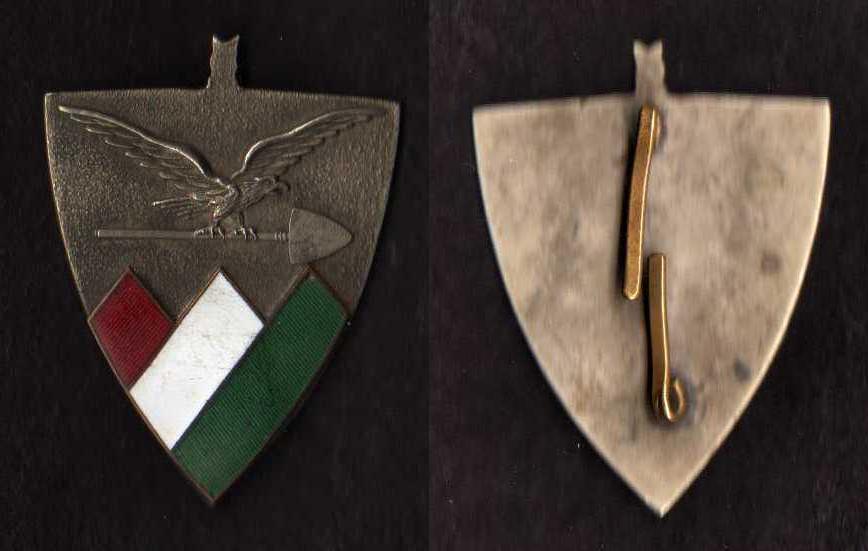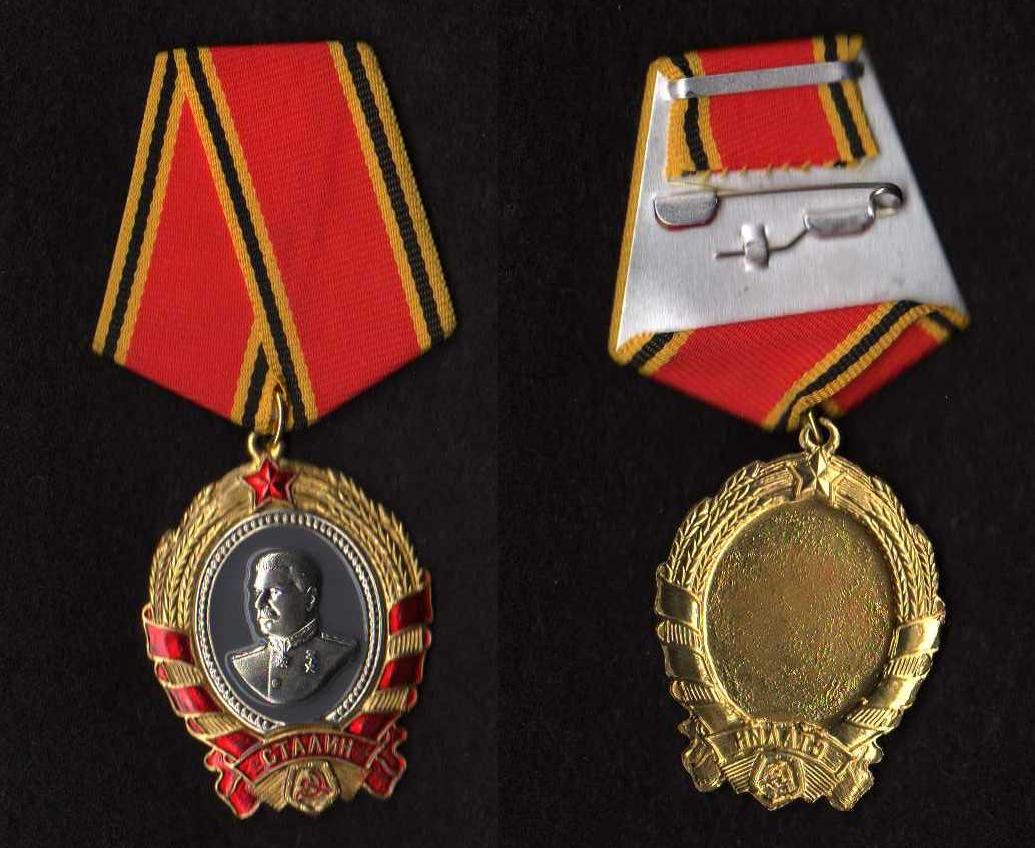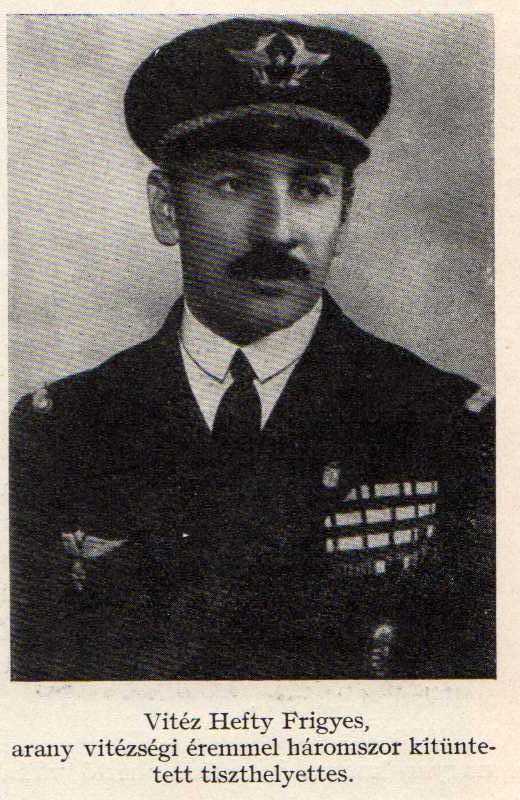-
Posts
2,660 -
Joined
-
Last visited
Content Type
Profiles
Forums
Blogs
Gallery
Events
Store
Posts posted by hunyadi
-
-
John -
Nice tunics - greatcoats were fitted with loops for the Combat Leadership Badge when they were to be worn for parade purposes. Also - the medals for return of Hungary should be 1) Felvidek, 2)Erdly, 3)Delvidek. Do you need a Fire Cross?? PM me.
0 -
Sigh - sniff, sniff - she's a great bar!
 Yes Dan it can belong here as it has the Fire Cross of 1943 with Swords indicating front line service. And the Commemorative Medal for an Independant Hungary. This one is for soldeirs, politicians, etc... who participated in forming the Debrecen Provisional National Government in 1944. Awarded on 4500 times. Lastly is the 1956 Commemorative Medal for participation in the October - November Revolution of 1956. The bar belonged to a man who in 1943 fought the Soviet Red Army. Then in Debrecen joined to the Red Army to fight off the German invaders of late 1944 to 1945. (though only a small fraction were actualy raised and encounted actual combat) and then in 1956 rose up with the Hungarians to fight the Soviets.
Yes Dan it can belong here as it has the Fire Cross of 1943 with Swords indicating front line service. And the Commemorative Medal for an Independant Hungary. This one is for soldeirs, politicians, etc... who participated in forming the Debrecen Provisional National Government in 1944. Awarded on 4500 times. Lastly is the 1956 Commemorative Medal for participation in the October - November Revolution of 1956. The bar belonged to a man who in 1943 fought the Soviet Red Army. Then in Debrecen joined to the Red Army to fight off the German invaders of late 1944 to 1945. (though only a small fraction were actualy raised and encounted actual combat) and then in 1956 rose up with the Hungarians to fight the Soviets.  0
0 -
Yugoslavia had also no order booklets for everyday use, too proove, that you are legitimated to wear your orders - that's very much the style of the Western world
 .
.Thats what I was afraid of! Stolen Valor Act anyone?
0 -
In my collection I have 5 surely original pieces only, of this order (no commander's cross though) and I feel myself quite lucky...
Wow Enzo! That is quite impressive - any chance of sharing some photos?
0 -
Dear hunyadi!
The star on that order IS made of solid silver(you can see 3 stamps on it, all ex yugo orders marked with 3 stamps are made of solid silver
 )
)Hehe it seems you have jacked the seller


Well - that is some good news - thanks for that bit of information!
 What I had thouhgt was heavy plating flaking off is just some good layers of patina.
What I had thouhgt was heavy plating flaking off is just some good layers of patina.Slightly
 but is there a good silver industry in Jugoslavia?0
but is there a good silver industry in Jugoslavia?0 -
So there was no notation or method of confirming that a soldeir or worker had earned an order or medal? Sorry if I seem to be hung up on this, I just expect that a soldier (for example) would have to have some sort of documentation on his person (soldier book) that would confirm to anyone who had the authority (police or higher officers) to inspect the documents of the soldier and to confirm in some manner that whatever awards the soldier was wearing (lets assume that he is returing to the barracks after a national parade) are actualy awarded to that person. Hungarians had a little slot in their soldier books in which they were supposed to stuff these little cards in to authorise them to wear ribbons or the awards. I am just thinking that the JNA would have has some sort of method and perhaps it may be there that we find serial numbers? If not - then I am stumped as to why they would issue these with numbers at all? (even though they did not number all awards or orders) Thanks for your patience in trying to answer my questions
 0
0 -
Thanks Ferdinand - I
 that OGPW!0
that OGPW!0 -
If there is no carying document - then how was it noted (other than a formal document) that a worker or soldier was entitled to wear certain awards? Was this noted in the workers book or the soldiers book? Thanks
 0
0 -
There was none for Hungary - the closest is the Matyas Rakosi Medal of Merit (for education)
0 -
Dear Charles,
interesting question
 .
.The fact is, that documents never show s/n. (some orders had s/n. and some others had no s/n.!) and I never saw a "carrying document" (like in the CCCP) for YU-Awards - are there any
 ?
?As far as I remember, there is a "carrying document" for the Hero-Order.
Best regards

Christian
I am going to make the assumption (as I dont know) that there were workbooks and soldierbooks. So then I must ask if thre is such books are there places to notate awards? And if there are - a place for the serial number? Sorry - I am transfixed on the serial number aspect.
 0
0 -
Interesting document Ed - esp as its devoid of any 'serial number'. I wonder if like the neighbors to the north, if they issued a formal document and a carrying document? Perhaps the carrying document held the serial number. But - if the documents are devoid of serial numbers - whats the reason for placing serial numbers on the orders themsleves? Inventory?

 0
0 -
Thats a good point Christian - it would not surprise me if the Umalatova awards that are on the market now (or from the last decade?) were just a way of jewlers to make a few extra rubles? Almost every award and document that I see is blank recently and the medals seem to be readily available as well. Hence my reasoning to starting the thread - make some form of documentation of these. So - post any and all (if you have one?)
 0
0 -
It looks to me like yours is a hot enamel where mine is a cold enamel. Probably yours is the Var 1 and mine is the Var 2.
 0
0 -
It will take some time to catalogue it all - it took all weekend just to sort out all the awards and the documents and put them in chronological order. As for Kivalo awards there are about 12. They have a combination of hanging star and the indiustry badges. The sad part is that I am in meetings all week long so I wont have any time to do much with it.
 But next week I may have some time to get more shots of it.0
But next week I may have some time to get more shots of it.0 -
nice one Dan! Its sure not a 'tourist' stein that you can buy today. Perhaps it was a gift for a NATO guy?
0 -
Thanks Rick! Sitaution was more a - they died and a family member knew that this particular person sold stuff like these 'old documents' at the flea market.
There are several photos of the second husband and photos of the wife, her father and mother, passport photos, photos of the kids, etc... no family photo album though

But like you say its a 21st century King Tut's Tomb. And like the old Tomb - it tells a big story about life during that time.
 0
0 -
Picked this one up recently as well - its the badge for the Volunteer Universtiy Work Service. (Sort of like a RAD unit - but made of vounteers). Not too valuable - but also not too common either

 0
0 -
Detail of the Order itself - pretty simple and not much effort to 'grace and elegance' when it comes to detail

 0
0 -
I know that many cringe and shake their heads at these, but I find them to be an interesting side note to the history of the Soviet Union. My hope for this thread would be to post some of these awards to make some record of them for reference. To start it off, this is my first 'Order of Stalin' with an unissued document.

 0
0 -
Was out yesterday at the local big flea market with a fellow (new) forum member showing him the sites for all the best militaria. Ran across a few documents at a table and started looking. Got excited as they were all to one husband / wife. Then looking at the cased medals on the table I realised that the medals and the documents were the same ones. Then I asked the nice lady if they were all from the same people. 'Yes' was the answer 'would you like to see more?'. Of course - then she produces a pile of papers, documents, passports, party books, etc...'Do you want them all?' 'YES!'. We bargained for a price that was acceptable for the both of us and I bought the whole lot - as a jesture she even threw in the suticase! When I got it home I started going through it all putting the documents (not seen in the photo) into protective sleeves. They are about 2" thick! Just a rough look throguh and the paperwork and documents cover the grandparents, the parents and the children. Best of all the wife wrote three memiors from the 1970's to the 1980's giving a fairly detalied account of what she did and to my surprise all of the awards that she was given (Order of Labor, Gold, Silver and Bronze. Order of Merit of the HUPR in Silver in 1951 and tons more!) She was also active in the communist party when it was illegal in 1937. It was there in 1937 that she met her second husband - the first marriage only lasted a year in 1955 and she married the other man in 1957. Interstingly enough it looks like the second husband was a POW and got back to Hungary in the early 1950's. (so he may not have been a good coummunist - or he was doing something in Mother Russia during those years.) Also of interest are some documents to another individual (perhaps brother?) that were from the Budapest Politcial Police and dealing with Jewish activity during the war - the documents are from 1946 (this was the forerunner to the Hungarian Secret State Police - AVO/AVH) All in all - its an amazing grouping that starts at the turn of the 20th century and ends at the fall of Hungarian Communism. Will try to add more when I do furhter research.

 0
0 -
Wow Ed -
With such a connection to the "Liberation of the Magyar", its a great addition! One that I would love to have one day

 0
0 -
Hi -
Very rare and havily copied! Thats the best piece of advice for these. As for dimensions:
Royal Hungarian Order of St Stephen Cross, with Gems (1764) 30mm in diameter. Has a gold frame of the odrer with green jems inlayed for the arms and a central medalion with 'MT' in diamonds (Maria Teresia) and a Greek Cross between the letters. On the perimeter of the central medalion is inscribed PUBLICUM MERITORUM PRAEMIUM. (grade does not have the Hungarian Crown above the cross, but has a counter ring and diamond encrusted perpendicular suspension loop)
Royal Hungarian Order of St Stephen Cross, Grand Cross (1764) 40mm in diameter. Central medalion is similar to the gems type but the reverse side of the central medalion is enscribed 'STO.-ST.RI.-AP' (SancTO STephano RegI APostolico). This grade also intirduces the use of the Hungarian crown as the suspension device - no dimensions given for the crown) From 1877 the diameter of the cross was increased to 45mm. This grade was worn in several manners: a- 104mm sash ribbon or a necklace chain device with 25 links made in the representation of MT and the Hungarian Crown. This grade also was awarded with a breast star that was 90-105mm in diameter. 8 pointed star formed in the fashion to represent that the star bursts are made from jems. Central medalion was 35-40 mm in daimeter and continued the MT theme.
Royal Hungarian Order of St Stephen Cross, Star of the Grand Cross with War Decoration and Swords (date?) (awarded once - no reference as to who that I can find) 82mm diameter star w/ 35mm central medalion. Gold laurel wreath around the perimeter 62mm in diameter with two golden crossed swords.
Royal Hungarian Order of St Stephen Cross, Commanders Cross (1764) 40mm in diameter with 52mm neck ribbon. The back of the Hungarin Crown device there is soldered a neck ribbon loop directly to the crown. After 1860 a round suspension loop is mounted verticaly at the top of the crown and then the neck ribbon loop is mounted through this.
Royal Hungarian Order of St Stephen Cross, Small Cross (Knights Cross) (1764) 35mm in diameter with a 52mm wide straight ribbon after 1860 mounted on a tirfold ribbon 40mm in diameter on each side.
Hope that helps
 0
0 -
As I recal the larger box was created due to the introduction of the US Airforce MOH, as its has a bigger hanger. The smaller box would be an earlier piece. Did you get a chance to take photos (since thats as lose to legaly having one can get!)
0 -
This one is the last one - its a photo of a Hungarian Vitez, who was decorated with the Golden Bravery Medal, however I cant identify the uniform???Anyone seen it before?

 0
0




URAL motorcycle
in Russia: Soviet: Other Militaria
Posted
I didnt know that they made a single piston style - the only ones I have seen around here are the pancake twins! Either way - they sound great and just ooooozzzzzeee nostalgia. They demand the open road!
Still want a Csepel first and a Ural second...